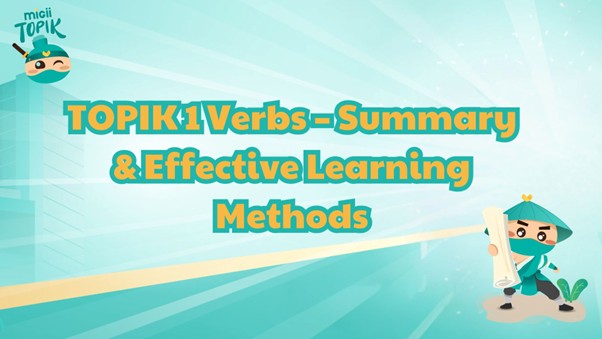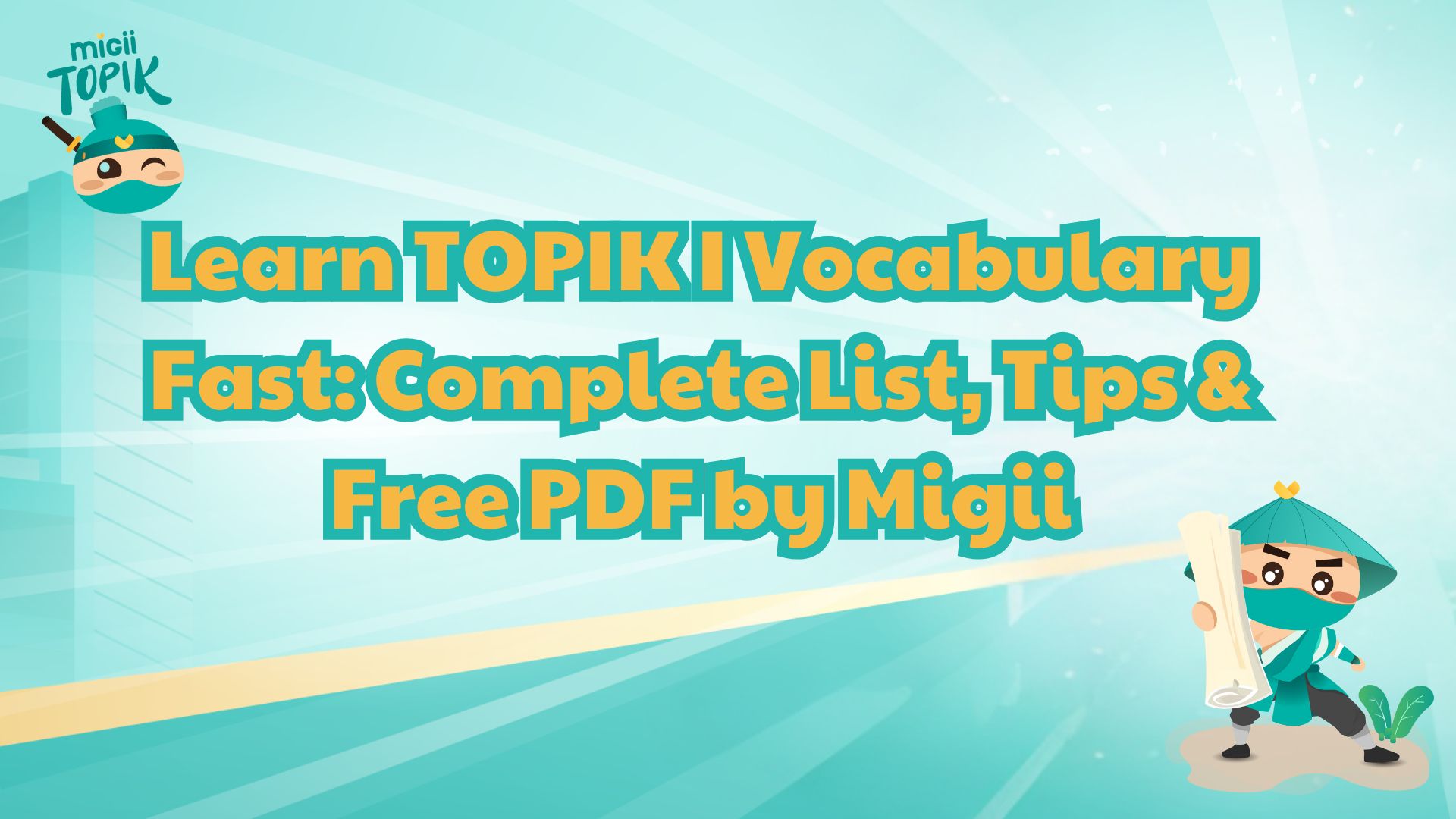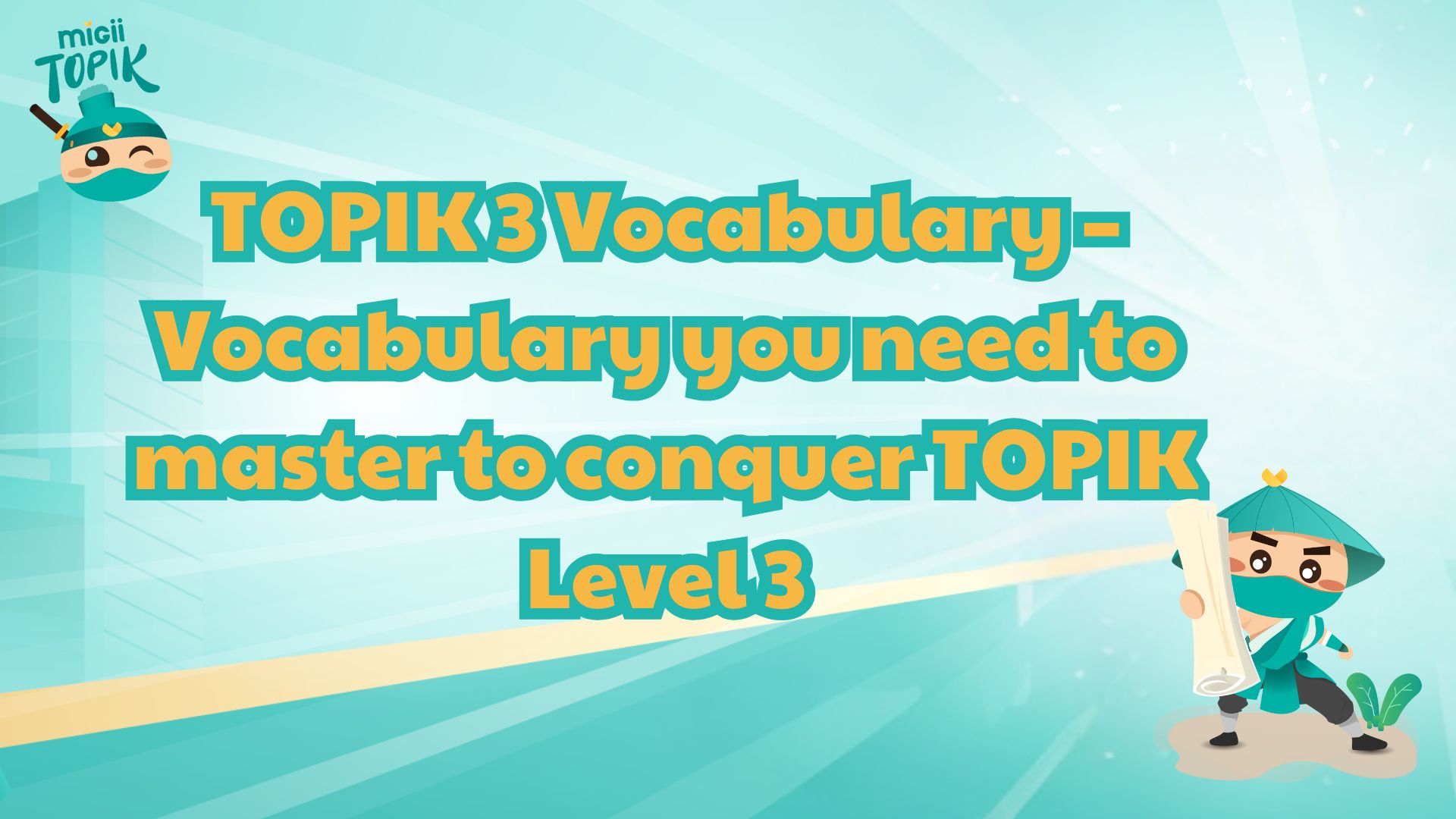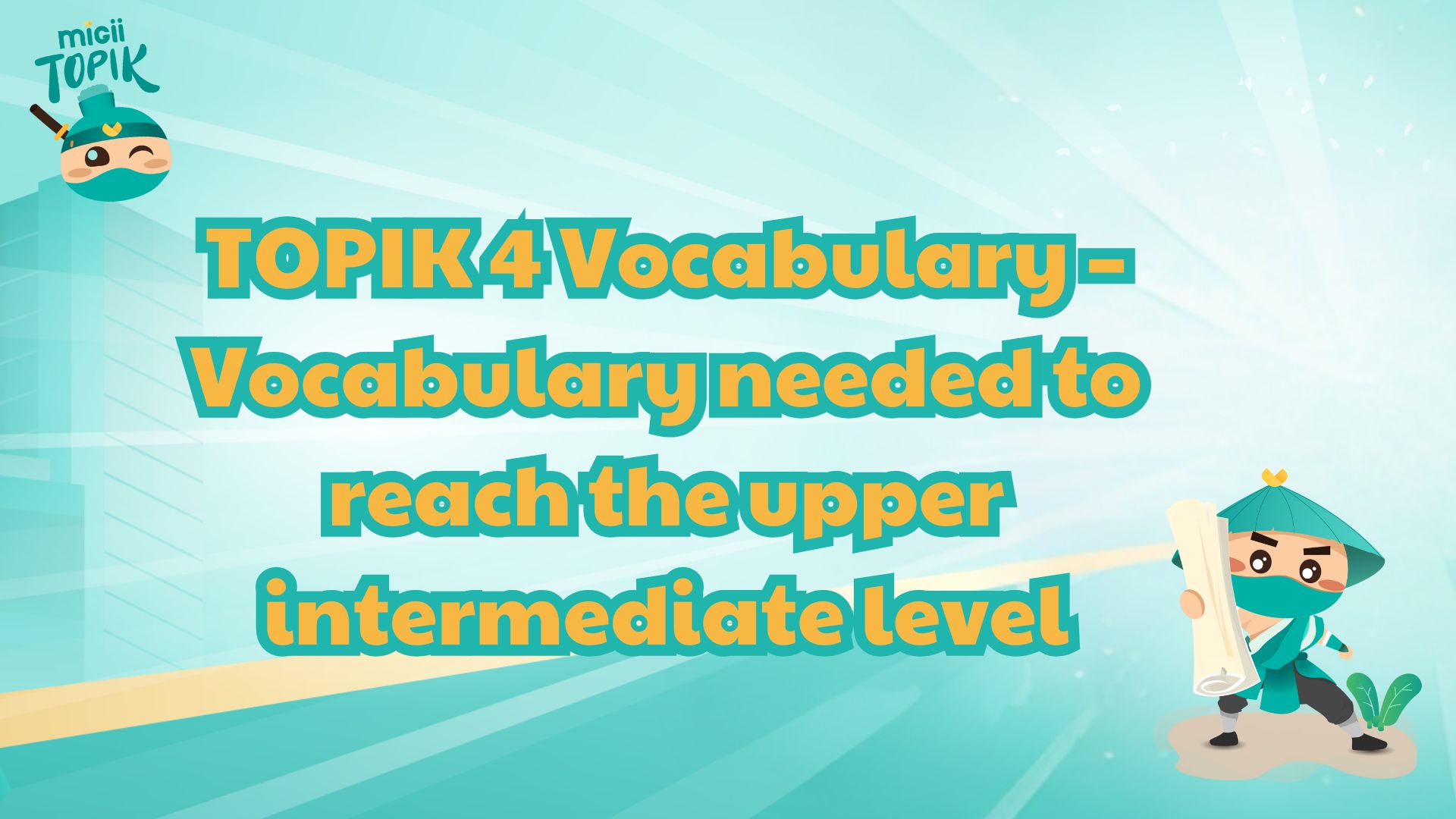Mastering JLPT vocabulary is key to success at every level. Migii offers clear guidance on vocabulary size, kanji, and study timelines. Using effective jlpt vocabulary strategies helps improve retention and practical use. Discover tips and resources with Migii to boost your Japanese learning efficiently and confidently.
What is JLPT Vocabulary and why It Matters?
JLPT vocabulary refers to the specific Japanese words and phrases that are essential for each level of the Japanese Language Proficiency Test. These words form the foundation of the language skills assessed, making mastery of them critical for exam success. Understanding and memorizing these jlpt words helps learners grasp the core elements of the language tested at each stage.
The JLPT consists of five levels, from N5 for beginners to N1 for advanced learners. Each level has its own jlpt vocab list tailored to assess different proficiency stages. By focusing on the vocabulary relevant to your target level, you can improve your comprehension in reading, listening, and communication tasks within the exam.
Mastering the appropriate jlpt vocab list enables more efficient study and builds a stronger grasp of Japanese overall. It not only aids in passing the test but also enhances real-life communication skills. Prioritizing vocabulary study is a strategic way to achieve better results in the JLPT and in practical language use.
JLPT vocabulary is essential words required for each JLPT exam level
Vocabulary and Kanji Counts by JLPT Level
The JLPT vocabulary requirements vary significantly across its five levels, reflecting increasing language complexity. Understanding the jlpt vocabulary for each level helps learners set realistic goals and study effectively.
Vocabulary and Kanji for JLPT N5
JLPT N5 is the most basic level, focusing on fundamental vocabulary and kanji. At this stage, learners are expected to know approximately 800 basic words and around 100 kanji characters. This foundation supports simple daily conversations, basic reading, and listening comprehension. Mastery at this level sets the stage for progressing to higher proficiency.
Below is JLPT vocabulary list with common examples to help you get started:
|
Word Type |
Japanese |
Meaning |
|
Nouns |
本 (ほん - hon) |
Book |
|
学校 (がっこう - gakkou) |
School |
|
|
先生 (せんせい - sensei) |
Teacher |
|
|
学生 (がくせい - gakusei) |
Student |
|
|
友達 (ともだち - tomodachi) |
Friend |
|
|
水 (みず - mizu) |
Water |
|
|
お金 (おかね - okane) |
Money |
|
|
時間 (じかん - jikan) |
Time |
|
|
家族 (かぞく - kazoku) |
Family |
|
|
名前 (なまえ - namae) |
Name |
|
|
Verbs |
読む (よむ - yomu) |
To read |
|
書く (かく - kaku) |
To write |
|
|
聞く (きく - kiku) |
To listen |
|
|
話す (はなす - hanasu) |
To speak |
|
|
見る (みる - miru) |
To see, to watch |
|
|
食べる (たべる - taberu) |
To eat |
|
|
飲む (のむ - nomu) |
To drink |
|
|
行く (いく - iku) |
To go |
|
|
来る (くる - kuru) |
To come |
|
|
する (suru) |
To do |
|
|
Adjectives |
大きい (おおきい - ookii) |
Big, large |
|
小さい (ちいさい - chiisai) |
Small |
|
|
高い (たかい - takai) |
Tall, expensive |
|
|
安い (やすい - yasui) |
Cheap |
|
|
面白い (おもしろい - omoshiroi) |
Interesting, fun |
|
|
難しい (むずかしい - muzukashii) |
Difficult |
|
|
易しい (やさしい - yasashii) |
Easy |
|
|
熱い (あつい - atsui) |
Hot |
|
|
寒い (さむい - samui) |
Cold |
|
|
美味しい (おいしい - oishii) |
Delicious |
|
|
Adverbs |
とても (totemo) |
Very |
|
少し (すこし - sukoshi) |
A little |
|
|
もう (mou) |
Already |
|
|
まだ (mada) |
Still, not yet |
|
|
よく (yoku) |
Often |
|
|
いつも (itsumo) |
Always |
|
|
ゆっくり (yukkuri) |
Slowly |
|
|
早く (はやく - hayaku) |
Quickly |
|
|
遅く (おそく - osoku) |
Late |
|
|
あまり (amari) |
Not much (with negative) |
|
|
Particles |
の (no) |
Possessive "of" |
|
が (ga) |
Subject marker |
|
|
を (o) |
Object marker |
|
|
に (ni) |
Indicates location/time |
|
|
へ (e) |
Directional particle |
|
|
と (to) |
"And", "with" |
|
|
も (mo) |
Also |
|
|
は (wa) |
Topic marker |
For vocabulary reference, please visit: JLPT N5 Vocabulary
Here is a list of basic Kanji commonly found in the JLPT N5 level. Mastering these characters is essential for building a strong foundation in Japanese. Combine learning Kanji with practicing vocabulary from the jlpt vocabulary list to improve your language skills effectively.
|
Kanji |
Japanese |
Meaning |
|
人 |
hito |
Person |
|
一 |
ichi |
One |
|
二 |
ni |
Two |
|
三 |
san |
Three |
|
日 |
nichi / hi |
Day / Sun |
|
本 |
hon |
Origin / Book |
|
中 |
naka |
Inside / Middle |
|
大 |
dai / oo |
Big |
|
小 |
shou / chii |
Small |
|
上 |
ue |
Up / Above |
|
下 |
shita |
Down / Below |
|
山 |
yama |
Mountain |
|
川 |
kawa |
River |
|
今 |
ima |
Now |
|
私 |
watashi |
I / Me |
|
何 |
nani / nan |
What |
|
年 |
toshi / nen |
Year |
|
月 |
gatsu / tsuki |
Month / Moon |
|
火 |
ka / hi |
Fire |
|
水 |
sui / mizu |
Water |
|
金 |
kin / kane |
Gold / Money |
|
土 |
do / tsuchi |
Earth / Soil |
|
曜 |
you |
Day of the week |
|
右 |
migi |
Right |
|
左 |
hidari |
Left |
|
前 |
mae |
Before / Front |
|
後 |
ato / go |
After / Behind |
|
分 |
bun / fun / wake |
Minute / Divide / Understand |
|
時 |
ji / toki |
Time / Hour |
|
半 |
han |
Half |
|
力 |
ryoku / chikara |
Power |
|
男 |
otoko |
Male |
|
女 |
onna |
Female |
|
子 |
ko |
Child |
|
見 |
mi |
See / Look |
|
聞 |
ki / kiku |
Hear / Listen |
|
読 |
yomi / doku |
Read |
|
書 |
sho / kaku |
Write |
|
買 |
kai / kau |
Buy |
|
食 |
shoku / tabe |
Eat |
|
飲 |
in / nomi |
Drink |
|
会 |
kai / au |
Meet |
|
行 |
kou / iku / yuku |
Go |
|
来 |
rai / kuru |
Come |
|
出 |
shutsu / de / da |
Exit / Leave |
|
入 |
nyuu / hai |
Enter |
|
立 |
ritsu / tachi |
Stand |
|
座 |
zai / suwa |
Sit |
|
言 |
gen / ii |
Say |
|
話 |
wa / hanashi / hana |
Speak / Talk / Story |
|
好 |
kou / suki / ko |
Like |
|
知 |
chi / shiri |
Know |
|
生 |
sei / shou / nama / u |
Life / Birth / Raw |
|
先 |
sen / saki |
Before / Ahead |
|
帰 |
ki / kaeri / kaesu |
Return |
|
少 |
shou / sukunai / s |
Few |
|
多 |
ta / ooi |
Many |
|
新 |
shin / atarashii |
New |
|
古 |
ko / furui |
Old |
|
高 |
kou / takai |
Tall / High |
|
安 |
an / yasui |
Cheap / Safe |
|
長 |
chou / nagai |
Long / Leader |
|
道 |
dou / michi |
Road / Path |
|
電 |
den |
Electricity |
|
車 |
sha / kuruma |
Car |
Vocabulary and Kanji for JLPT N4
JLPT N4 tests an intermediate beginner’s Japanese vocabulary and kanji knowledge. At this level, learners should be familiar with around 1,500 words and 300 kanji characters. Mastering N4 vocabulary allows you to understand everyday conversations and simple written texts with ease. Below is a representative JLPT vocab lists to help you build a strong foundation.
|
Word Type |
Japanese |
Meaning |
|
Noun |
挨拶 (aisatsu) |
greeting, salutation |
|
Noun |
味 (aji) |
flavor, taste |
|
Noun |
赤ちゃん (akachan) |
baby, infant |
|
Noun |
安全 (anzen) |
safety |
|
Noun |
友達 (tomodachi) |
friend |
|
Noun |
場所 (basho) |
place, location |
|
Noun |
文法 (bunpou) |
grammar |
|
Noun |
力 (chikara) |
force, strength, vigor |
|
Noun |
注意 (chuui) |
caution, being careful |
|
Noun |
大学生 (daigakusei) |
university student |
|
Verb |
上がる (agaru) |
to rise, to ascend |
|
Verb |
謝る (ayamaru) |
to apologize |
|
Verb |
選ぶ (erabu) |
to choose, to select |
|
Verb |
頑張る (ganbaru) |
to hang on, to do one’s best |
|
Verb |
始める (hajimeru) |
to start, to begin |
|
Verb |
遊び (asobi) (noun/verb) |
playing / to play |
|
Verb |
集める (atsumeru) |
to collect, to assemble, to gather |
|
Adj |
浅い (asai) |
shallow, superficial |
|
Adj |
大事 (daiji) |
important, serious, crucial |
|
Adj |
普通 (futsuu) |
general, ordinary, usual |
|
Adj |
深い (fukai) |
deep, profound |
|
Adj |
複雑 (fukuzatsu) |
complex, complicated |
|
Adj |
安い (yasui) |
cheap, inexpensive |
|
Adj |
面白い (omoshiroi) |
interesting, amusing |
|
Adj |
難しい (muzukashii) |
difficult |
|
Adj |
易しい (yasashii) |
easy |
For vocabulary reference, please visit: JLPT N4 Vocabulary
Here is a list of important kanji for the JLPT N4 level. Mastering these kanji will help you better understand texts and materials at this proficiency. Be sure to review and practice regularly to strengthen your kanji skills:
|
Kanji |
Reading (Kun/On) |
Meaning |
|
上 |
うえ (ue) / じょう (jō) |
up, above |
|
下 |
した (shita) / か (ka) |
down, below |
|
中 |
なか (naka) / ちゅう (chū) |
inside, middle |
|
大 |
おお (ō) / だい (dai) |
big, large |
|
小 |
ちい (chii) / しょう (shō) |
small |
|
学 |
まな (mana) / がく (gaku) |
study, learning |
|
校 |
— / こう (kō) |
school |
|
生 |
い (i), う (u) / せい (sei), しょう (shō) |
life, birth |
|
先 |
さき (saki) / せん (sen) |
previous, ahead |
|
私 |
わたし (watashi) / — |
I, me |
|
時 |
とき (toki) / じ (ji) |
time, hour |
|
間 |
あいだ (aida) / かん (kan) |
interval, between |
|
書 |
か (ka) / しょ (sho) |
write |
|
食 |
た (ta) / しょく (shoku) |
eat |
|
飲 |
の (no) / いん (in) |
drink |
|
行 |
い (i) / こう (kō) |
go |
|
来 |
く (ku) / らい (rai) |
come |
|
見 |
み (mi) / けん (ken) |
see |
|
言 |
い (i) / げん (gen) |
say |
|
話 |
はな (hana) / わ (wa) |
speak, talk |
|
新 |
あたら (atara) / しん (shin) |
new |
|
古 |
ふる (furu) / こ (ko) |
old |
|
長 |
なが (naga) / ちょう (chō) |
long, leader |
|
門 |
もん (mon) |
gate |
|
雨 |
あめ (ame) / う (u) |
rain |
For kanji reference, please visit: JLPT N4 Kanji
Vocabulary and Kanji for JLPT N3
JLPT N3 marks a transition from basic to intermediate Japanese proficiency, demanding a broader vocabulary and deeper understanding of kanji. At this level, learners are expected to know around 3,750 vocabulary words and approximately 650 kanji characters. The vocabulary and kanji encountered in N3 cover a wide range of everyday topics as well as some specialized subjects, requiring more contextual knowledge and usage skills.
Mastery of JLPT N3 vocabulary and kanji is essential for those aiming to confidently navigate more complex texts and conversations in Japanese.
|
Word Type |
Japanese |
Meaning |
|
Noun |
予定 (よてい) |
plan, schedule |
|
Noun |
経験 (けいけん) |
experience |
|
Noun |
生活 (せいかつ) |
life, living |
|
Noun |
環境 (かんきょう) |
environment |
|
Noun |
社会 (しゃかい) |
society |
|
Verb |
助ける (たすける) |
to help |
|
Verb |
成功する (せいこうする) |
to succeed |
|
Verb |
変わる (かわる) |
to change |
|
Verb |
比べる (くらべる) |
to compare |
|
Verb |
注意する (ちゅういする) |
to be careful |
|
Adjective |
便利な (べんりな) |
convenient |
|
Adjective |
確かな (たしかな) |
certain, sure |
|
Adjective |
急な (きゅうな) |
sudden |
|
Adjective |
苦しい (くるしい) |
painful, difficult |
|
Adjective |
真面目な (まじめな) |
serious, diligent |
For vocabulary reference, please visit: JLPT N3 Vocabulary
Here is an overview and a Kanji list suitable for the JLPT N3 level. At this stage, learners are expected to know about 650 kanji characters. These kanji appear frequently in daily life and basic academic texts. Mastering them will greatly improve your reading comprehension and overall language skills.
|
Kanji |
Japanese Reading (Kunyomi) |
Meaning |
|
使 |
つか(う) (tsukau) |
to use |
|
調 |
しら(べる) (shiraberu) |
to investigate, tone |
|
受 |
う(ける) (ukeru) |
to receive |
|
記 |
to record |
|
|
力 |
ちから (chikara) |
power, strength |
|
歩 |
ある(く) (aruku) |
to walk |
|
運 |
はこ(ぶ) (hakobu) |
to carry, luck |
|
集 |
あつ(まる) (atsumaru) |
to gather |
|
始 |
はじ(める) (hajimeru) |
to begin |
|
知 |
し(る) (shiru) |
to know |
|
速 |
はや(い) (hayai) |
fast |
|
転 |
to roll, to turn |
|
|
選 |
えら(ぶ) (erabu) |
to choose |
|
変 |
か(わる) (kawaru) |
change, strange |
|
結 |
むす(ぶ) (musubu) |
to tie, to bind |
For kanji reference, please visit: JLPT N3 Kanji
Vocabulary and Kanji for JLPT N2
At the JLPT N2 level, learners are expected to master approximately 1,000 kanji and around 6,000 vocabulary words. This level demands a deeper understanding of the language, including more complex grammar and the ability to comprehend detailed texts on various topics.
The kanji and vocabulary covered at this stage are commonly found in newspapers, novels, and academic materials, making them essential for advanced communication and comprehension.
Mastery of JLPT N2 vocabulary and kanji significantly improves reading fluency and listening skills needed for real-world situations and professional environments.
|
Word Type |
Japanese |
Meaning |
|
Noun |
経済 (けいざい) |
economy, economics |
|
文化 (ぶんか) |
culture |
|
|
政治 (せいじ) |
politics |
|
|
経験 (けいけん) |
experience |
|
|
環境 (かんきょう) |
environment |
|
|
事故 (じこ) |
accident |
|
|
Verb |
解決する (かいけつする) |
to solve |
|
改善する (かいぜんする) |
to improve |
|
|
発展する (はってんする) |
to develop, to grow |
|
|
発表する (はっぴょうする) |
to announce, to present |
|
|
判断する (はんだんする) |
to judge, to decide |
|
|
Adjective |
複雑な (ふくざつな) |
complex |
|
詳しい (くわしい) |
detailed, knowledgeable |
|
|
重要な (じゅうような) |
important |
|
|
豊かな (ゆたかな) |
abundant, rich |
|
|
正確な (せいかくな) |
accurate |
|
|
Adverb |
徐々に (じょじょに) |
gradually |
|
実際に (じっさいに) |
actually, in fact |
|
|
かなり |
considerably, fairly |
|
|
できるだけ |
as much as possible |
|
|
特に |
especially |
For vocabulary reference, please visit: JLPT N2 Vocabulary
Below is a selection of important kanji characters commonly tested at the N2 level:
|
Kanji |
Reading (On/Kun) |
Meaning |
|
経 |
けい (kei) |
pass through, manage |
|
済 |
さい (sai) |
finish, come to an end |
|
族 |
ぞく (zoku) |
tribe, family |
|
省 |
しょう (shō) |
omit, government ministry |
|
増 |
ぞう / ます (zō/masu) |
increase |
|
選 |
せん (sen) |
select, choose |
|
様 |
よう / さま (yō/sama) |
manner, situation, Mr./Ms. |
|
詳 |
しょう / くわ (shō/kuwa) |
detailed, full |
|
割 |
かつ / わり (katsu/wari) |
divide, rate |
|
政 |
せい (sei) |
politics, government |
|
権 |
けん (ken) |
authority, rights |
|
解 |
かい / と (kai/to) |
untie, solve |
|
線 |
せん (sen) |
line |
|
構 |
こう / かま (kō/kama) |
construct, posture |
|
質 |
しつ (shitsu) |
quality |
|
価 |
か (ka) |
price, value |
Vocabulary and Kanji for JLPT N1
JLPT N1 is the highest and most challenging level of the Japanese Language Proficiency Test, requiring mastery of approximately 10,000 vocabulary words and over 2,000 kanji characters. The vocabulary at this level includes advanced and specialized terms often used in academic texts, newspapers, and formal discussions.
Kanji recognition at N1 involves complex characters and compounds with nuanced meanings. Achieving proficiency in these areas is crucial for understanding sophisticated written materials and fluent communication in Japanese.
|
Word Type |
Japanese |
Meaning |
|
Noun |
政治 (せいじ) |
Politics |
|
経済 (けいざい) |
Economy |
|
|
環境 (かんきょう) |
Environment |
|
|
影響 (えいきょう) |
Influence |
|
|
習慣 (しゅうかん) |
Habit |
|
|
Verb |
批判する (ひはんする) |
To criticize |
|
減少する (げんしょうする) |
To decrease |
|
|
対応する (たいおうする) |
To respond, to cope |
|
|
発展する (はってんする) |
To develop |
|
|
解決する (かいけつする) |
To solve |
|
|
Adjective |
複雑な (ふくざつな) |
Complex, complicated |
|
重要な (じゅうような) |
Important |
|
|
適切な (てきせつな) |
Appropriate, suitable |
|
|
確実な (かくじつな) |
Certain, reliable |
|
|
新たな (あらたな) |
New, fresh |
For vocabulary reference, please visit: JLPT N1 Vocabulary
JLPT N1 kanji cover about 2,000 advanced characters used in complex academic and professional texts. Mastery of these kanji is crucial for deep comprehension and effective communication at the highest proficiency level:
|
Kanji |
Reading |
Meaning |
|
政 |
せい (sei) |
politics, government |
|
経 |
けい (kei) |
manage, pass through |
|
減 |
げん (gen) |
decrease |
|
対 |
たい (tai) |
opposite, versus |
|
環 |
かん (kan) |
ring, circle |
|
影 |
えい (ei) |
shadow, silhouette |
|
習 |
しゅう (shuu) |
learn |
|
慣 |
かん (kan) |
accustomed |
|
批 |
ひ (hi) |
critique |
|
判 |
はん (han) |
judge |
|
発 |
はつ (hatsu) |
departure, emit |
|
展 |
てん (ten) |
expand |
|
解 |
かい (kai) |
unravel, solve |
|
複 |
ふく (fuku) |
compound, duplicate |
|
難 |
なん (nan) |
difficult |
For vocabulary reference, please visit: JLPT N1 Kanji
Estimated Study Time to Reach Vocabulary Goals for Each JLPT Level
Reaching the required vocabulary for each JLPT level takes consistent effort and time. Study duration varies based on individual learning pace, but setting clear vocabulary goals helps maintain progress. Efficient methods can shorten the path to mastering JLPT vocabulary.
Study Time and Planning for JLPT N5
To reach the JLPT N5 vocabulary goal, learners typically need about 3 to 6 months of study, dedicating around 20 - 30 minutes daily. At this beginner level, focus on mastering basic vocabulary, hiragana, katakana, and simple kanji characters. Consistency is key to building a strong foundation in Japanese.
At the JLPT N5 level, focusing on basic vocabulary is essential for building a strong language foundation. Adopting specific study methods will make learning easier and more effective:
- Start with hiragana and katakana: Master these two phonetic scripts before diving deep into vocabulary. This foundation makes reading and pronunciation easier.
- Learn high-frequency everyday words: Focus on words used commonly in greetings, family, numbers, and basic activities to maximize practical use.
- Use mnemonic devices: Create simple mental images or stories to remember kanji shapes and meanings better.
- Practice listening with N5 audio materials: Listening to beginner dialogues reinforces vocabulary retention and pronunciation.
- Review regularly: Use spaced repetition apps like Anki tailored for N5 vocabulary to avoid forgetting. Schedule weekly reviews of previously learned words.
Consistent daily study and focused methods help efficiently master JLPT N5 vocabulary
Study Time and Planning for JLPT N4
Reaching the JLPT N4 vocabulary goals usually takes around 6 to 9 months of steady study, depending on your prior knowledge and learning pace. At this level, learners handle about 1,500 words and 300 kanji, which demands more focused practice on sentence structures and everyday contexts. Vocabulary Study Tips for N4:
- Focus on practical vocabulary themes: Concentrate on everyday topics like family, travel, and shopping that appear frequently in N4. Make personalized flashcards with example sentences reflecting your daily life to remember words more effectively.
- Combine reading with grammar practice: Read simple N4 texts and try to identify new vocabulary within the grammar structures you know. Write your own sentences using these words to better understand their usage and reinforce both vocabulary and grammar simultaneously.
- Target weak points with tailored exercises: Use sample tests to find which question types or vocabulary sets you struggle with, then focus your study on those areas. Practice listening actively by repeating key phrases and answering questions to boost comprehension and retention.
Study Time and Planning for JLPT N3
Reaching the JLPT N3 level requires mastering about 3,750 vocabulary words and 650 kanji, marking a significant jump in complexity from N4. Typically, learners spend around 9 to 12 months preparing to handle more advanced grammar, longer reading passages, and natural-speed listening materials. Effective planning and targeted practice are essential to balance all skills and build confidence for the test day.
- Focus on thematic vocabulary: Concentrate on words related to everyday situations like work, social interactions, feelings, and current events. This makes memorization easier and helps you use words naturally in conversations.
- Practice listening with real dialogues: N3 listening includes longer conversations. Regularly listen to podcasts, dramas, or JLPT practice audios to get used to natural speed and intonation, improving comprehension beyond just word recognition.
- Master kanji readings and compounds: Many kanji at N3 change readings depending on the compound word. Use flashcards or apps that quiz both individual kanji and their common compounds to improve recognition speed and accuracy.
- Create your own sentences: Actively write or speak sentences using new vocabulary and grammar points. This deepens understanding and makes recall easier during the exam.
JLPT N3 demands advanced vocabulary and kanji mastery with balanced skills practice
Study Time and Planning for JLPT N2
Preparing for JLPT N2 demands mastering around 6,000 vocabulary words and 1,000 kanji, reflecting an advanced intermediate level. Most learners require about 12 to 18 months of focused study to confidently handle complex grammar, dense reading passages, and fast-paced listening sections. Strategic planning and disciplined practice are key to mastering the depth and breadth of content.
- Learn special Kanji readings: Focus on irregular ON/KUN readings and pay attention to pronunciation marks like dakuten and long vowels.
- Master prefixes, suffixes, and compounds: Study common affixes (e.g., 金, 代, 費, 不, 無, 非) to understand complex word meanings.
- Distinguish similar Kanji and homophones: Use context, stroke patterns, and accompanying hiragana to identify correct Kanji.
- Practice fill-in-the-blank and synonyms: Pay attention to subtle differences in meaning and usage; use Japanese-Japanese dictionaries for deeper understanding.
- Manage time and use specialized materials: Answer questions efficiently (20–60 seconds each) and study with JLPT N2 resources like Mimi Kara Oboeru and Shinkanzen Goi.
Study Time and Planning for JLPT N1
JLPT N1 is the most advanced level, requiring deep understanding of complex vocabulary, nuanced grammar, and sophisticated kanji usage. Achieving the vocabulary goals at this level typically demands long-term, consistent study, often spanning 1-2 years depending on your background. N1 vocabulary includes many abstract, academic, and formal terms rarely used in daily conversation, so targeted study strategies are essential.
- Master nuanced and rarely used vocabulary: Focus on learning words with subtle differences in meaning and context, including idiomatic expressions, proverbs, and technical terms often found in newspapers, academic texts, and formal speech.
- Deepen kanji knowledge with multiple readings and meanings: Many kanji at N1 have multiple pronunciations and meanings depending on context. Use advanced kanji dictionaries and practice with authentic texts to recognize and understand these variations accurately.
- Integrate extensive reading and listening practice: Regularly read complex materials such as editorials, essays, and literature, and listen to academic lectures or news broadcasts to expose yourself to high-level vocabulary in context, enhancing both recognition and comprehension.
- Use spaced repetition with advanced flashcards: Employ SRS (Spaced Repetition System) tools focused on N1 vocabulary and kanji to review frequently and efficiently, ensuring long-term retention of challenging words.
JLPT N1 requires long-term study of advanced vocabulary, kanji, and complex grammar
Effective Vocabulary Learning Tips for Each JLPT Level
Effective vocabulary learning is essential for success in each JLPT level. Adapting your study methods to match the difficulty and content of your target level helps you learn efficiently and retain more words over time.
Use Migii JLPT for vocabulary practice
Migii JLPT is a versatile app designed to support learners at all JLPT levels from N5 to N1. It offers a range of tools including mock exams, vocabulary lists, and practice exercises that can be used both online and offline, helping learners build and test their vocabulary effectively.
- Simulated mock exams: Practice under timed conditions with detailed feedback to track progress and identify weak areas.
- Curated vocabulary lists: Access level-specific word lists organized by themes and grammar points, including essential words for each JLPT level.
- Varied practice exercises: Reinforce learning with reading comprehension questions, synonym identification, and context-based vocabulary tests.
- Focused learning: Use diagnostics to target and improve weaker vocabulary areas for efficient study.
- Integrated skill development: Combine vocabulary practice with grammar, reading, and listening exercises to enhance overall JLPT readiness.
Migii JLPT app provides comprehensive, level-specific vocabulary practice and exam preparation
Practice spaced repetition consistently
You should review vocabulary regularly using spaced repetition methods. For N5–N4 learners, daily short reviews help build a strong foundation. Higher-level learners (N3–N1) benefit from longer intervals to reinforce complex words. Using apps with scheduled reviews makes learning more efficient.
Learn vocabulary in real-life contexts
You need to study words in practical situations. Beginners should focus on common phrases from daily life like shopping and greetings. Intermediate and advanced learners should read news, listen to podcasts, or watch videos to grasp nuances. This approach helps understand natural usage.
Create and review personalized flashcards
You should make flashcards that suit your learning style. Basic flashcards with word meanings work well for beginners. For advanced levels, include example sentences and multiple meanings. Regularly reviewing and updating your flashcards helps focus on weak vocabulary.
Personalized flashcards improve vocabulary retention by matching individual learning needs
Set achievable daily vocabulary goals
You should set a clear, manageable target of new words to learn each day. For JLPT N5 and N4, aim to learn 5 - 10 simple words daily, focusing on frequently used everyday vocabulary. For N3 to N1, prioritize 3 - 5 complex or compound words daily and spend more time reviewing their usage and nuances. Use a notebook or app to track daily progress and adjust your goals based on how well you retain the words.
Refer to detailed JLPT level guides
You need to study vocabulary lists that match your JLPT level exactly. Beginners (N5, N4) should concentrate on core words like basic nouns, verbs, and adjectives used in daily conversation. Intermediate to advanced learners (N3 - N1) must focus on specialized vocabulary, idiomatic expressions, and technical terms relevant to the test. Pair these guides with mock tests to identify weak points and reinforce those areas systematically.
Conclusion
Mastering JLPT vocabulary requires clear daily goals and level-specific guides. Tailor your practice to your JLPT stage for better retention and steady progress. Consistent review and real-life use deepen understanding. Download the JLPT vocabulary list pdf for effective preparation.








